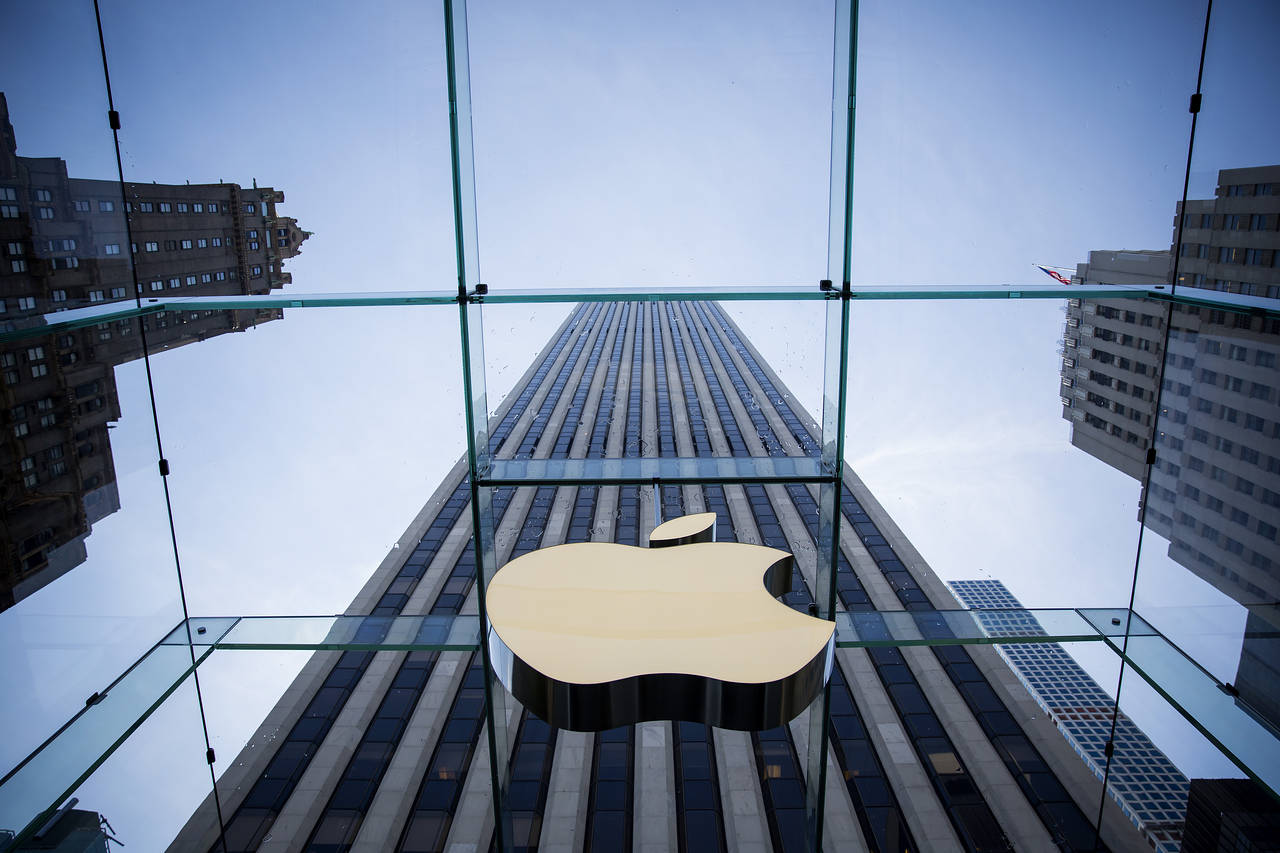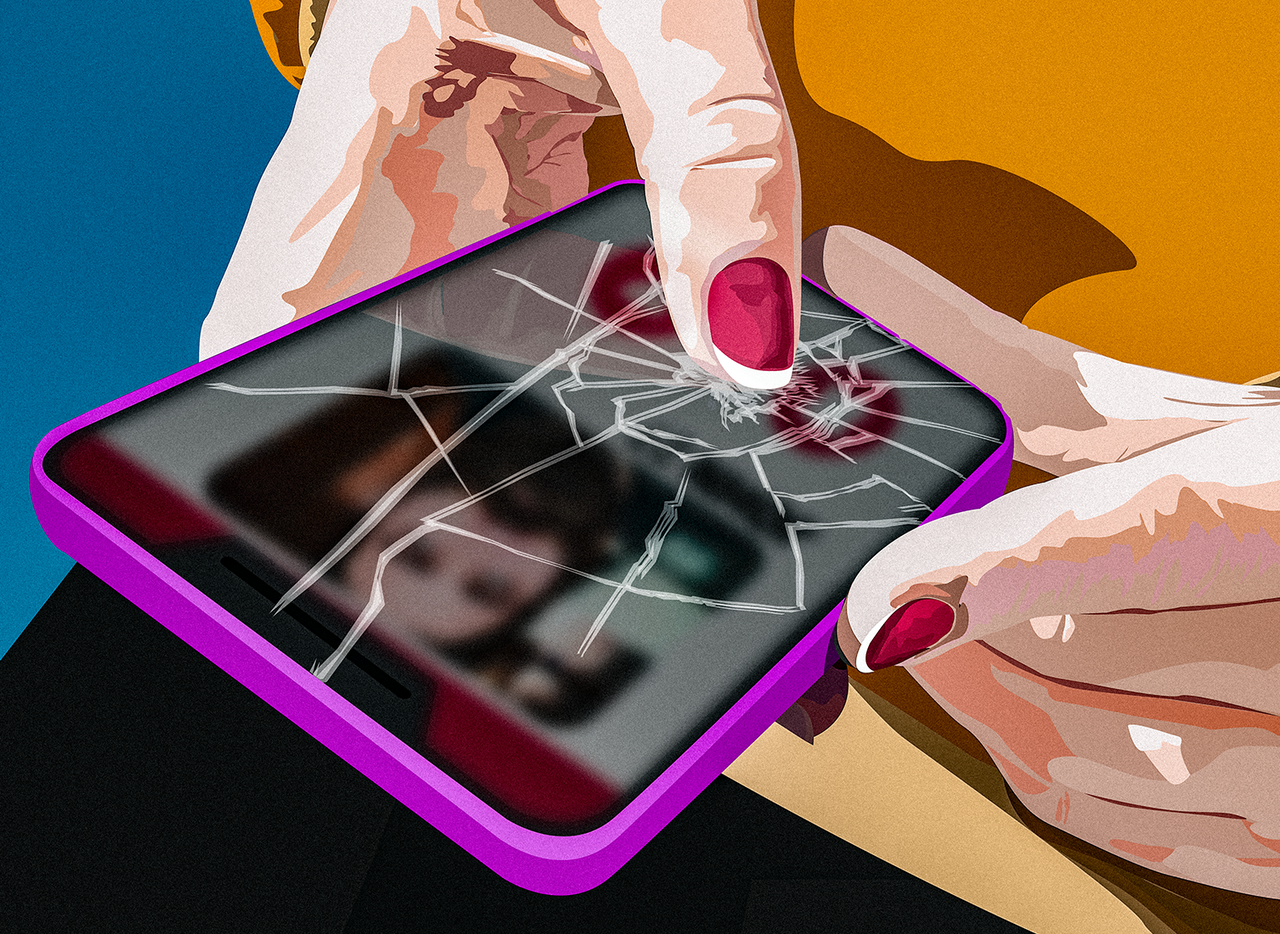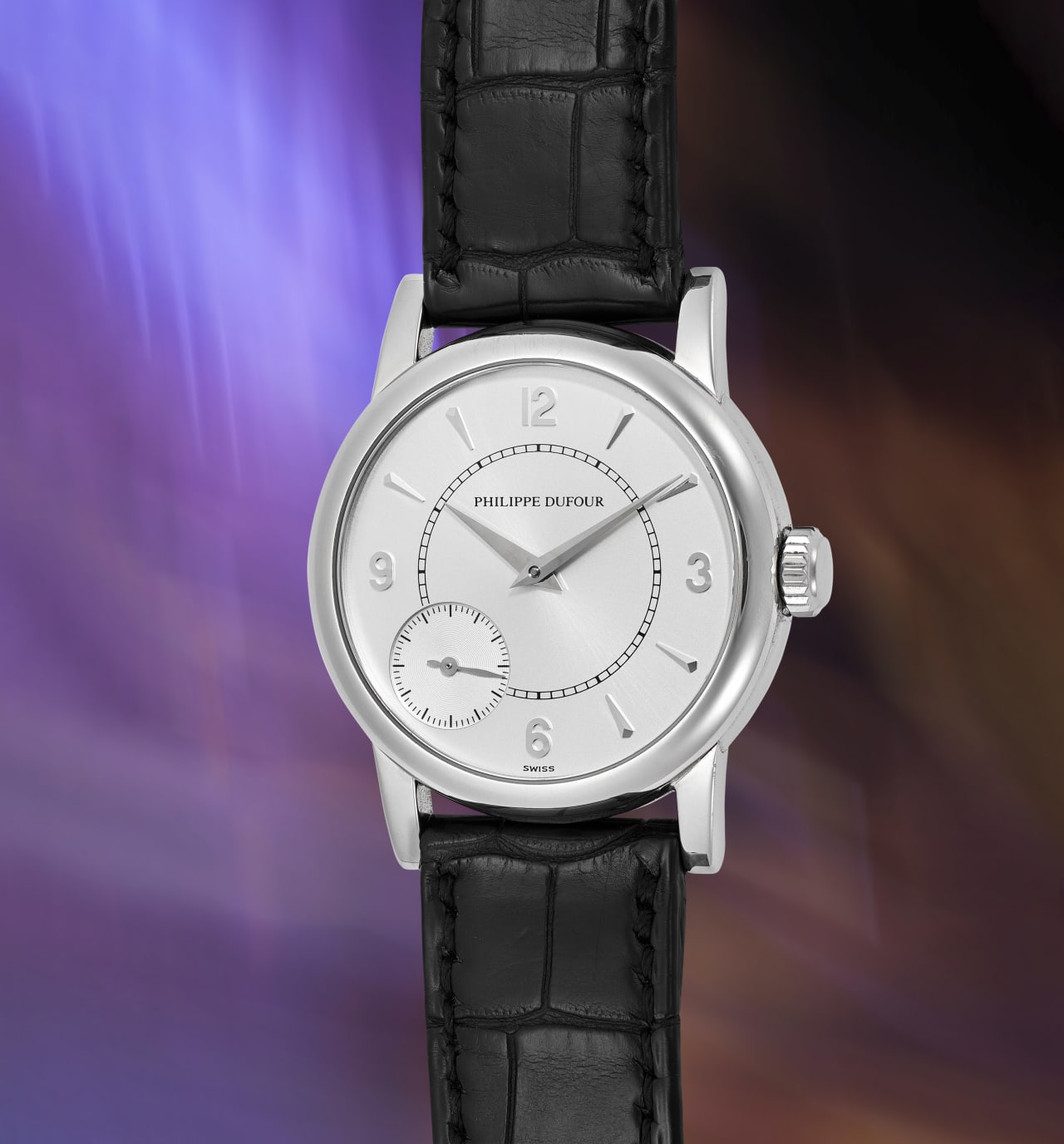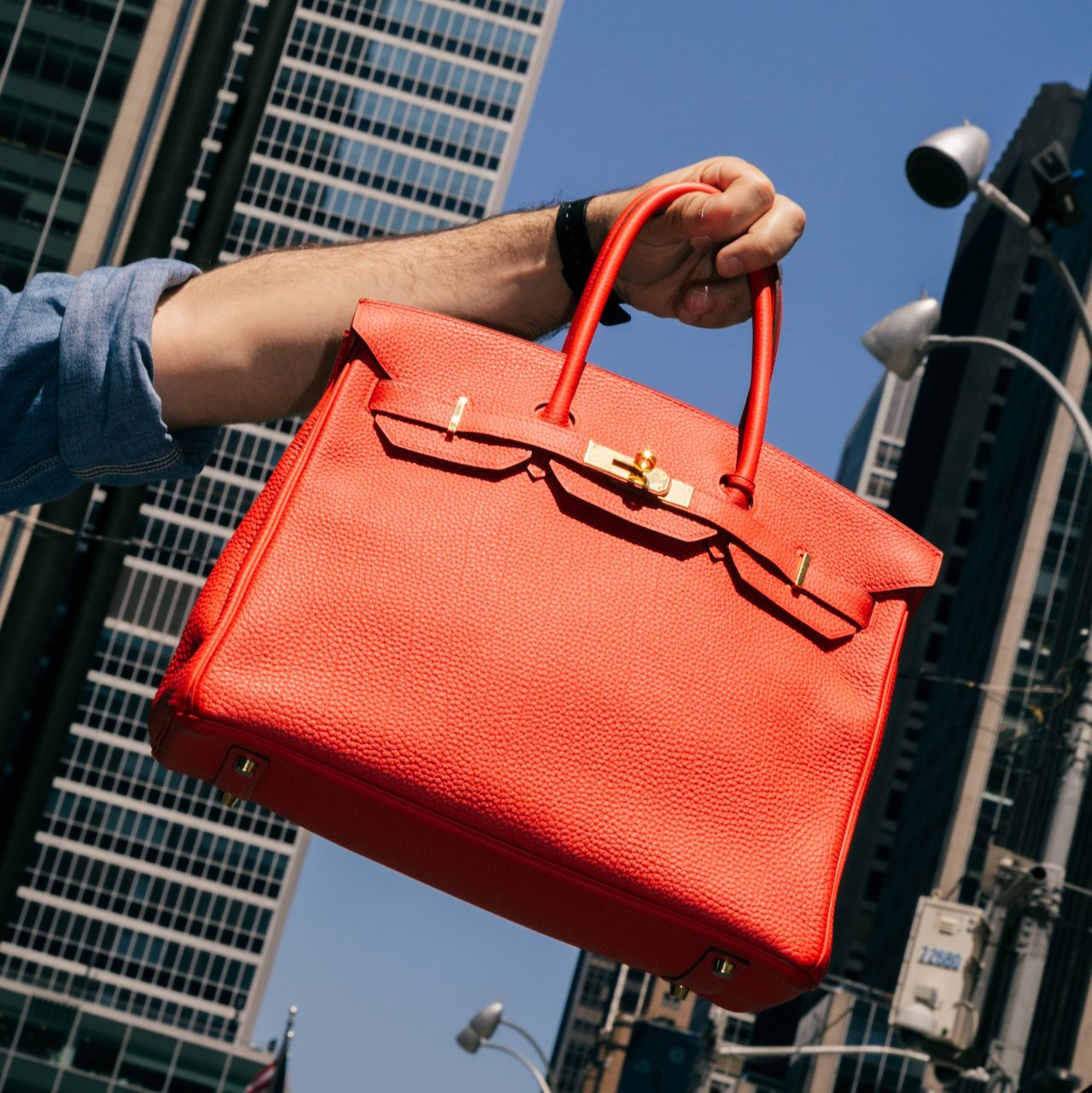Apple Sued by Employees Alleging Unequal Pay for Women
Lawsuit says company’s hiring and performance-review practices routinely slant toward men
Two female Apple employees filed a proposed class-action lawsuit Thursday alleging the company pays women lower salaries than men for similar work.
The suit, filed in a San Francisco state court, targets Apple’s hiring practices used to set compensation, as well as the company’s performance-review policies. It is the latest in a series of pay equity lawsuits against major corporations, including large tech giants, that allege they underpay women and minorities .
The lawsuit seeks to represent a class of 12,000 women employed at Apple across several departments who have worked there since 2020. The plaintiffs allege that the company is violating the California equal pay, employment and unfair business practice laws. The business practice law limits claims to a four-year period.
An Apple spokesman said the company has achieved and maintained gender pay equity since 2017. Apple works with an independent third-party expert to examine team members’ total compensation and makes adjustments where necessary, he said.
Google and Oracle settled similar claims in California in recent years, pushing similar arguments about pay policies for new hires. Google agreed to pay 15,500 women $118 million to settle its case in 2022 and Oracle agreed to pay $25 million for 4,000 female workers earlier this year. The companies didn’t admit wrongdoing.
One of the lead attorneys on those cases is also representing the plaintiffs against Apple.
Central to the new lawsuit is how Apple sets a new hire’s compensation. Before 2018, Apple asked applicants to provide their previous salaries to determine pay, the suit says.
When California passed a 2018 law that banned employers from considering prior pay to set compensation, Apple asked applicants about pay expectations instead, the suit says. The plaintiffs’ lawyers argue that the practice of asking about pay expectations perpetuates gender discrimination because women have historically been paid less than men.
“If you do pay women less, you can’t defend it by saying they were willing to take less money,” said James Finberg , one of the plaintiffs’ attorneys.
One of the plaintiffs, Justina Jong, said she discovered a male co-worker’s W2 left behind on a printer in Apple’s Sunnyvale, Calif., branch. Though she had the same responsibilities as her male co-worker, she saw his base salary in the tax filing was $10,000 more than what she made, she said. She discovered the discrepancy several years ago, about midway through her decade-plus career at Apple, where she held several roles in sales, training and marketing.
“I felt terrible and was shocked as well. I saw myself as a hardworking person, and collaborative, providing a lot of solutions for the team,” Jong said in an interview. “I thought to myself, ‘Maybe if I work harder, they will see that I’m worth just as much or more.’”
The lawsuit alleges that when Apple hired Jong in 2013, it paid her the same base salary she earned at her previous job. In the years following, the company never gave her the kind of raise that put her on equal footing with her male peers, the suit says.
Jong said it took her years to decide to challenge the discrepancy and sign onto the lawsuit. She said she was spurred by stories about unequal pay from other women at the company.
During the Covid-19 pandemic, Apple faced a rise in employee activism. Apple workers organized to form a group called Apple Too to mirror the #MeToo movement, which gathered stories of discrimination and pushed the company to change its pay practices. The movement led to some retail stores forming unions.
“At Apple we are deeply committed to inclusion and we have a longstanding commitment to pay equity, which is embedded in our approach to compensating our valued team members,” a spokesman for Apple said.
The other named plaintiff, Amina Salgado, has worked at Apple since 2012 in various roles, including as a manager in the AppleCare division in the company’s office near Sacramento. She discovered she was paid less than men in similar roles, and she complained several times about the discrepancy, according to the lawsuit. Apple hired a third party to investigate, and after the report concluded she was right, the company increased her pay. She didn’t get back pay, the lawsuit says.
The suit also claims that Apple uses biased criteria in its performance-review system. Men routinely receive higher ratings for the discretionary categories of leadership and teamwork, leading to better reviews for men, the plaintiffs’ lawyers argue.
 Copyright 2020, Dow Jones & Company, Inc. All Rights Reserved Worldwide. LEARN MORE
Copyright 2020, Dow Jones & Company, Inc. All Rights Reserved Worldwide. LEARN MORE
This stylish family home combines a classic palette and finishes with a flexible floorplan
Just 55 minutes from Sydney, make this your creative getaway located in the majestic Hawkesbury region.
Ad campaigns for online dating companies have become flashpoints for frustrated online daters
As online-dating apps court new and younger audiences, some of their marketing efforts are turning off daters instead.
Bumble last month apologised for ads making light of women so frustrated with online dating that they would consider celibacy. The League, a dating app targeting “the overly ambitious,” was called “ick-inducing” for its recent ad campaign, which included taglines like “Date someone with a 5-year-plan that makes you want to ovulate.” And Hinge’s years-long “Designed to Be Deleted” campaign has started to fall flat for longtime users still looking for love on their phones.
Online dating continues to play a lead role in the romantic lives of millions of Americans. Around half of all U.S. adults under 30 have used a dating site or app at some point in their lives, and one in 10 adults with partners say they met their significant other by dating online, according to Pew Research Center data. And the industry’s biggest players, Match Group and Bumble, now generate annual revenues north of $3.4 billion and $1.1 billion, respectively.
But the ad campaigns have high stakes for online dating companies trying to achieve the right mix of user acquisition and pricing power to re-interest Wall Street in a saturated sector.
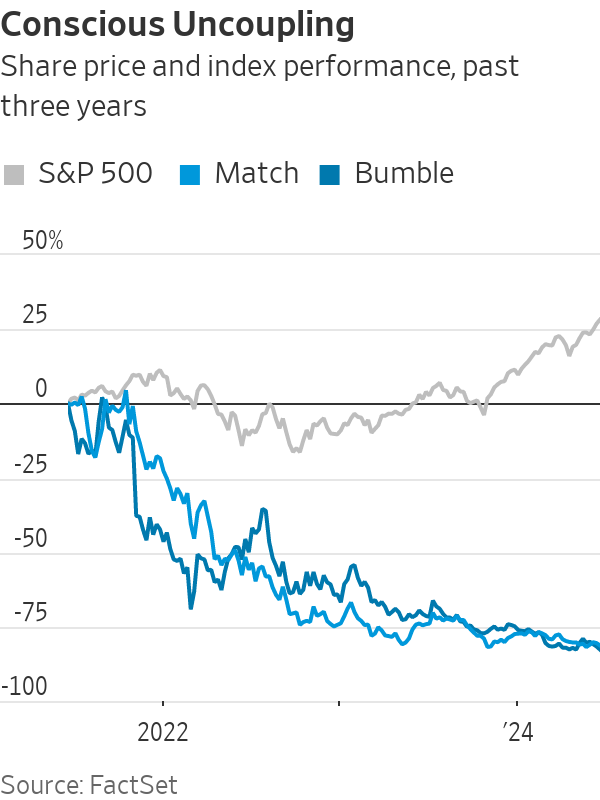
Online-dating growth has been slowing. Paying users declined 6% in the first quarter of the year at Match Group, whose portfolio includes the League, Tinder and Hinge, compared with a 3% dip in the first quarter of 2023. The Bumble app grew paying users 18% in the first quarter, compared with 31% growth in the period a year earlier.
Shares in both have fallen this year even as the S&P 500 rose. And some singles have become perhaps as wary as investors.
Nearly half of all online daters and more than half of female daters say their experiences have been negative, according to Pew , and a growing tide of users are sharing their dissatisfaction in popular Facebook forums and on TikTok. People bemoan a perceived rise in bad dating etiquette such as “ghosting” and the sending of unsolicited sexual messages, and blame the way online romance makes it easier to discard potential partners at a touch of a button. “Hacks,” or tricks designed to game the apps for better dates, abound, demonstrating the shortcomings of their designs.
And the companies’ growing emphasis on pricier premium services is giving users new reasons to scrutinise the algorithmically driven path to romance.
Bumble made its name as a free app that only let women make the first move, for example. But since 2016, it has charged for advantages such as unlimited “swipes” to connect with prospects. The most expensive plan today costs $80 a month. Nonpaying users on Bumble and other apps can hit a limit, which some say leaves them taunted by the nagging fear that their perfect partners are hidden just on the other side of a paywall.
In this environment, new ad campaigns have become a release valve for the tension.
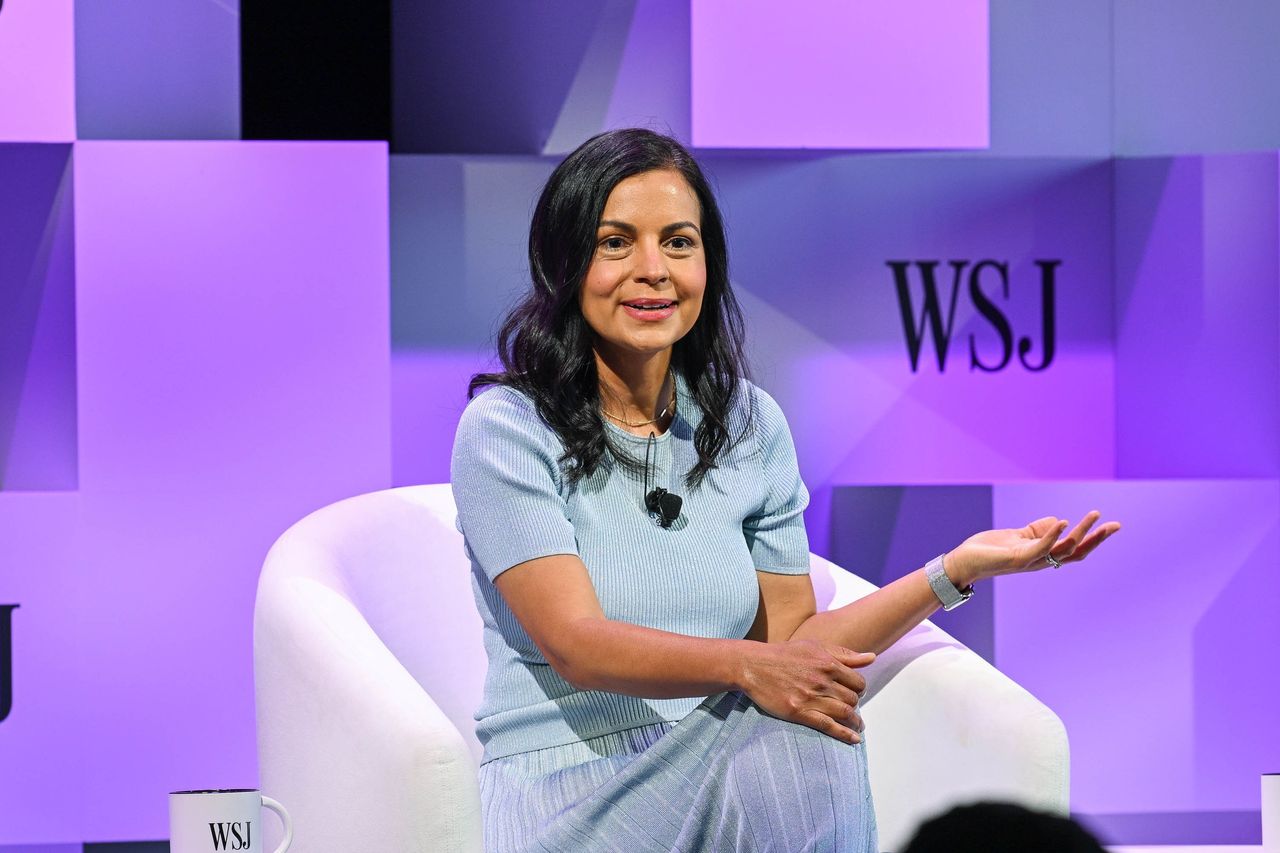
Failure to launch
Bumble users had hoped change was on the way after a teaser campaign depicted a discouraged dater joining a convent but happily leaving after being handed the Bumble app. “We’ve changed so you don’t have to,” one of the ads promised.
“At this point, it’s the app’s responsibility not to rebrand, but to pivot technologically,” said Michelle Khouri , the founder of creator platform Recordical , who has been using dating apps on and off for 10 years following her divorce from a man she met through online dating service eHarmony.
But Bumble’s big move wasn’t a fundamental overhaul: The company was letting women put questions on their profiles to which men they matched with could respond without a specific invitation.
Disappointment became backlash when the full ad campaign included billboards that declared, “Thou shalt not give up on dating and become a nun” and “You know full well a vow of celibacy is not the answer.”
Female daters often thinly disguise their dissatisfaction with modern dating by joking about giving it up for a life of spinsterhood, and Bumble had done what all marketers try to do—joined the conversation .
The problem for many was that Bumble’s quips about nunneries located the problem in daters’ resilience, as opposed to the dating apps themselves, and the unfavourable dating culture some users say the apps’ owners have been complicit in fuelling.
“Bumble was a brand that built its identity on empowering women and then they absolutely laughed in our faces,” said Michelle Wintersteen, the founder and chief executive of branding and marketing agency MKW Creative and a former Bumble user who grew frustrated by its paywalls.
Bumble took down the billboards and made several public apologies.
“We just made a mistake in how that landed. It was not good and we felt really terrible about it,” Bumble CEO Lidiane Jones said at a Wall Street Journal event last month.
Jones added in an emailed statement that the company is enhancing its internal and external review processes, and “actively engaging in conversations to ensure our marketing tone matches the 10 years Bumble has dedicated to championing women and creating safe, respectful, and empowering spaces for connection.”
Some online-dating executives and observers think the gripes with dating apps are largely an extension of age-old ennui over the search for lasting love.
“This is not a new phenomenon, and I think that dating apps have crystallised and brought those concerns to the fore, primarily because the prior institutions that were responsible for connecting individuals—such as family, friends, churches, other homes of worship—were not able to assume blame in the same way,” said Jess Carbino, a sociologist who has worked as a consultant for Bumble and Tinder.
Pickup lines
When the League introduced its “Be a GoalDigger” brand campaign in 2023, its first big marketing effort since being acquired by Match Group in 2022, some had visceral reactions.
“Whoever is behind this truly thought they were like, hitting Gen -Z, being super edgy and cool,” said the TikTok user who reported getting the “ick” from its campaign. “In reality, it is the most millennial, cringy thing that makes you want to actually convulse.”
The app has “never been afraid of speaking up or speaking out about the kind of people that The League attracts,” said Lisa Kraynak, senior vice president of marketing for the League, in a statement. In addition to its ad mentioning ovulation, others read: “Find Your Goal Mate” and “Date Someone With Big Goal Energy.”
“We know that we aren’t for everyone, and that is a core part of our value proposition,” Kraynak added, noting that a number of people responded well to it.
Unlike apps such as Tinder and Bumble, the League requires profile approval to join. On the app, users get three to five prospects a day unless they upgrade to become a paying member, which runs $99 a week or $399 for a three-month subscription. Once a match is made in the app, users have 14 days to initiate a conversation before the matches expire.
Fighting flakes
These components, as well as features such as a “flakiness score” indicating which users have a habit of matching but not chatting, are why Kraynak said the League is “designed to combat the dissatisfaction with apps today .”
Tinder has leaned away from the celebration of singledom that it embraced in a 2018 brand campaign that called single “a terrible thing to waste.” While the app has long been associated with hookups, the company has more recently emphasised the various relationships that can result from its app. Its marketing now romanticizes “a toothbrush at their place” and “comfortable silences,” all while it seeks to upsell users.
“It was about shedding a perception that was too narrow and not accurate,” said Melissa Hobley, chief marketing officer at Tinder.
Hinge, the Match Group brand that has long positioned itself as an app for finding relationships rather than hookups, continues to iterate on its “Designed to Be Deleted” campaign launched in 2019. The company has refreshed the campaign every year since then with the same tagline.
On social media, some dissatisfied users say they have deleted the app—not because they found love but because the app didn’t work for them. Hinge said every feature is designed to help daters be intentional and that it is looking for ways to address dating burnout.
Chief Marketing Officer Jackie Jantos said Hinge is the fastest-growing major dating app.
“‘Designed to Be Deleted,’ as an idea and a marketing program, continues to help us build our base of users,” Jantos said.
Match Group said Hinge’s direct revenue grew 50% in the first quarter of the year as paying members increased 31% and revenue per payer rose 14%. It offers two types of subscriptions, Hinge+ and HingeX, which start at $14.99 and $24.99, respectively, a week.
More recently, the company partnered with a social-media brand that interviews couples on the street, to circulate their love stories that involve Hinge.
“We know that our best growth comes from organic success stories of people meeting on Hinge,” added Jantos.
This stylish family home combines a classic palette and finishes with a flexible floorplan
Just 55 minutes from Sydney, make this your creative getaway located in the majestic Hawkesbury region.









